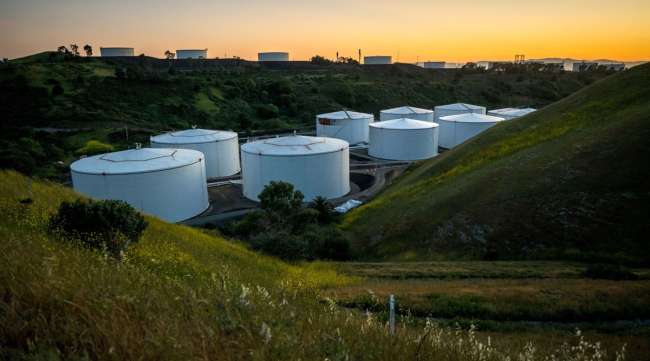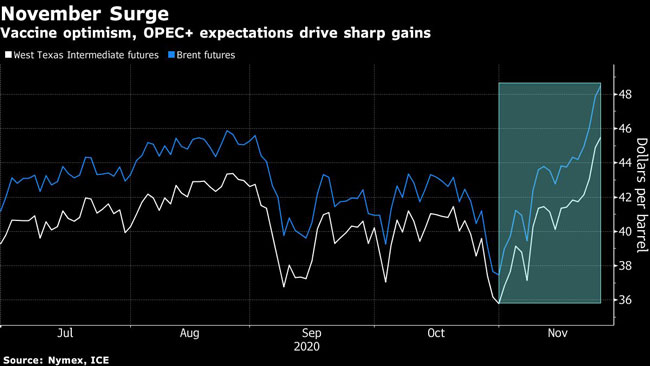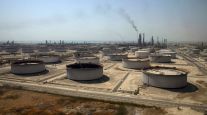Bloomberg News
Oil Advances to Eight-Month High on Demand Optimism

[Ensure you have all the info you need in these unprecedented times. Subscribe now.]
Oil extended gains, trading at its highest level since March, on mounting optimism that recent breakthroughs on a COVID-19 vaccine will lead to a swift recovery in global energy demand next year.
Futures in New York on Nov. 25 rose 1.2% to trade above $45 a barrel. That followed a flurry of tenders from Chinese and Indian refiners seeking crude oil for January, the latest sign of roaring strength in Asian markets.
With the prospect of a coronavirus vaccine improving oil’s longer-term outlook, the crude futures curve has surged, with several key markers moving into a bullish backwardation structure in recent days. That indicates tighter supplies, and could support the argument of OPEC+ nations hoping to raise output when the group meets early next week.

Oil’s value has risen by more than a quarter this month amid positive vaccine results. With the market’s prospects picking up, Brent crude could reach $60 a barrel by the summer of 2021, according to Bank of America Corp. Prices have also been supported by renewed geopolitical tensions, with recent attacks on a fuel depot in the Saudi city of Jeddah and on an oil tanker in the Red Sea.
“The recent news around COVID-19 vaccines has boosted crude prices as markets start to look to a return to some sort of normality in 2021,” HSBC Bank analyst Gordon Gray said. “We expect OPEC+ to err on the side of caution as it evaluates how the market evolves.”
As well as the structure of the futures curve, prices further out have also been moving higher. WTI prices for 2021 were at their strongest level since March early Nov. 25, while those for 2022 topped $45 to reach their highest since September. The higher forward prices are boosting the incentive for oil producers to lock in their supplies for the coming years.
The American Petroleum Institute, meanwhile, reported a 3.8 million-barrel increase in U.S. crude inventories, according to people familiar with the data. That would be a third straight week of gains if confirmed by government figures due later Nov. 25. The median estimate in a Bloomberg survey showed inventories probably rose by 225,000 barrels last week.
Want more news? Listen to today's daily briefing:
Subscribe: Apple Podcasts | Spotify | Amazon Alexa | Google Assistant | More




